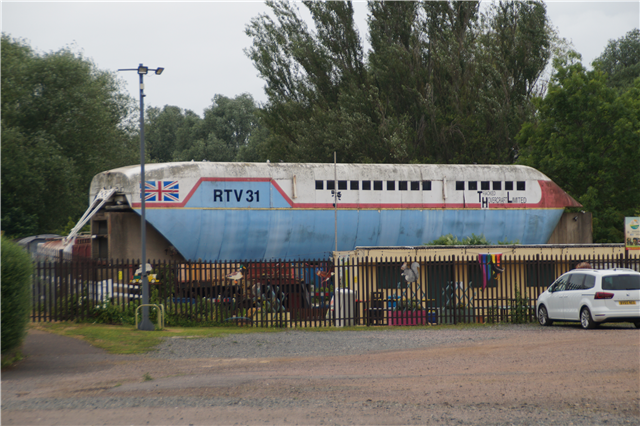Tracked Hovercraft was an experimental high speed train developed in the United Kingdom during the 1960s. It combined two British inventions, the hovercraft and linear induction motor, in an effort to produce a train system that would provide 250 mph (400 km/h) inter-city service with lowered capital costs compared to other high-speed solutions.
On 7 February 1973 the first test train, Research Test Vehicle 31, or RTV 31, reached 104 mph (167 km/h) on a 1-mile (1.6 km) section, in spite of the short track and a 20 mph (32 km/h) headwind. The test was heavily publicised and shown on BBC news throughout the day.
Substantially similar to the French Aérotrain and other hovertrain systems of the 1960s, Tracked Hovercraft suffered a similar fate to these projects when it was cancelled as a part of wide budget cuts in 1973. RTV 31 ended up at Cranfield University where it was kept in the open for more than 20 years. In 1996 it was donated to Railworld, where it was later restored and set up as a main display in front of the buildings.
